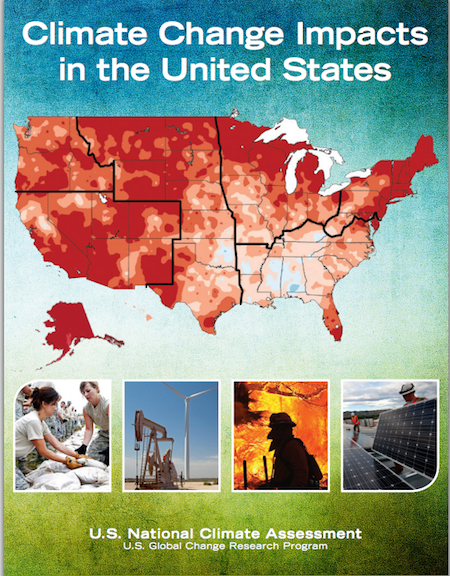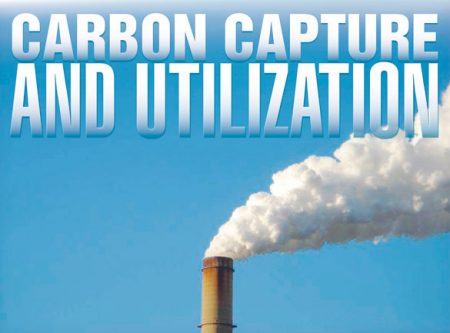January 20, 2017 – In the latest United States National Global Change Research Plan 2012-2021 (NGCRP), the first words of the Executive Summary state, “the global environment is changing rapidly as a result of human activities.” This is more than a comment about climate change. It includes the impacts of population growth, urbanization, economics, energy, natural resources, ecosystems, oceans, ice and the atmosphere, in fact, all “systems that influence human life.” It goes on to talk about the risks and the opportunities these changes represent. The report then goes on to present a strategic plan which its contributors revise every three years as new data is accumulated and analyzed. Strategies include mitigation and adaptation, the development of better decision-making tools, and partnerships with academic, private sector, government and non-government experts.
The four goals of the NGCRP are:
-
Advance Science: Advance scientific knowledge of the integrated natural and human components of the Earth system.
- Inform Decisions: Provide the scientific basis to inform and enable timely decisions on adaptation and mitigation.
- Conduct Sustained Assessments: Build sustained-assessment capacity that improves the Nation’s ability to understand, anticipate, and respond to global change impacts and vulnerabilities.
- Communicate and Educate: Advance communications and education to broaden public understanding of global change and develop the scientific workforce of the future.
Which departments of government within the United States are involved?
Agriculture, Commerce, Defense, Energy, Health and Human Services, Interior, State, Transportation, EPA, NASA, National Science Foundation, Smithsonian and U.S. Agency for International Development.
What have these U.S. institutions concluded?
- The Arctic climate impact observed to date shows rapid change with implications for global climate, sea levels, altered weather patterns, methane release and other greenhouse gases.
- Observed water cycle extremes impact food availability, infrastructure, energy production and human health.
- Methane within the spectrum of greenhouse gas emissions represents an immediate and rapid climate influencer.
In its analysis of the science, the report discusses “potential pathways for climate intervention.” Climate intervention equals geoengineering. Among the strategies is the removal of carbon dioxide (CO2) from the atmosphere and sequestering it. A second discussion looks at reflecting sunlight to cool the Earth. The report also considers intended and unintended consequences should geoengineering be applied to global warming. Carbon removal and storage, states the report, is no substitute for reducing greenhouse gas emissions, or for adaptation to the changes that the climate will cause. It is seen, rather, as one of a number of tools that humans could deploy to manage future climate change. The report also acknowledges that “other countries or the private sector may decide to conduct intervention experiments independently from the U.S. Government.” The report also notes that experimentation with any geoengineering will require global agreement. After all, any atmospheric experiment with aerosols would impact the global commons the same way naturally occurring phenomena such as volcanic eruptions. And carbon removal will require a better understanding of impacts on the geochemistry of the locations where sequestration occurs.
Although not discussed in this report, one of the more promising industry trends is to find ways to convert CO2 emissions from a waste product into a marketable commodity. This goes well beyond existing sequestration technologies that pump captured CO2 into existing fields to enhance oil recovery (EOR). Known as CO2-EOR, the oil and gas industry has applied a variety of solutions within oil fields since the 1970s. Back then no one thought of it as a means of permanently sequestering carbon. Today, however, the benefit is acknowledged. In a report last fall the International Energy Agency (IEA) stated that CO2-EOR produced a 0.19 metric tons of CO2 storage for every recovered barrel of oil. The National Coal Council in the United States, in a recent report concluded that CO2-EOR provided the “most immediate, highest value opportunity to utilize the greatest volumes of anthropogenic CO2.”
But the use of CO2 for commercial purposes goes well beyond pumping it into oil fields. An X-Prize competition offering $20 million U.S. to applicants has drawn many entries with plans to create products from CO2 including concrete, biofuels, paint, fertilizers, health supplements, toothpaste, and carbon nanotube batteries. The size of the CO2 utilization market for carbon aggregate products has been estimated to be as much as $700 billion U.S. by 2030, using 7 billion metric tons of CO2 per year, or 15% of current global emissions.
For the new administration in the United States, experimentation through geoengineering could be seen as an excuse for eliminating the reduction strategies of President Obama. So could CO2 utilization and commercialization. But this would be a mistake. Intervention and commercialization are complimentary strategies but no substitute for carbon reductions, adaptation and mitigation to deal with current and future environmental consequences from the present carbon footprint and the state and rate of anthropogenic-caused global warming.











